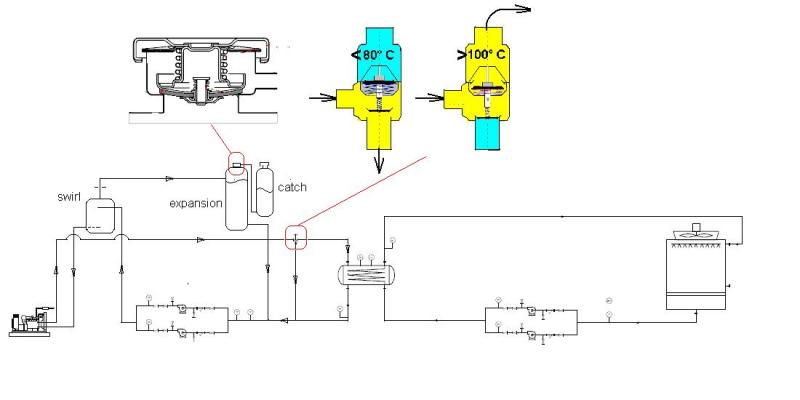i would think designing the system the other way around would be more useful. what you actually want is not a specific inlet water temperature, but a flow of water through the engine that is sufficient to absorb the heat you need to get rid off, with some extra capacity. thus i would regulate the water outlet temperature of the engine with a thermostat in such a way that the optimal engine temperature is reached and regulated under all foreseeable operating conditions. that usually means that the outlet temperature (in a pressurized system) can be quite high, say somewhere between 95 to 105 C, depending on the pressure build up in the system when the water heats up. if the temperature gets higher then the thermostat setting, part of the flow then is directed to and through the heat exchanger, cooled down there, and flowing back to the engine. as long as that water return temperature is such that the resulting mixture in the engine is capable of taking the heat away as needed, you will be fine. it does not matter whether the water coming back from the heat exchanger is 30, 50, or 70 C, as long as the thermostat is capable of regulating the outgoing water temperature in the engine within it's range.
the heat exchanger that gives off the heat to be cooled away to the cooling tower system thus functions like the radiator in a car. in the cooling tower circuit another valve then needs to be incorporated so that the water flowing through the engine never gets out of the range that can be controlled by the engine thermostat. there a quite different setting could possibly be used, depending on both the capacity of the cooling tower and the need to keep the water returned to the engine within a particular range.
the idea is to control the engine cooling system with two thermostats in tandem. the primary regulation takes place in the engine itself, and when temperatures go beyond the range foreseen the additional thermostat comes into action. you can compare it to a system in a car where the fan or fans are actuated electrically when the airflow through the radiator is temporarily insufficient, eg in slow traffic or standstill after a prolonged high speed drive.
you are free to mount the expansion tank for the engine cooling system anywhere, since it is a closed and pressurized system. usually the cooling tower system is not pressurized and "open", although a expansion tank may be added to prevent contact with air that could lead to oxidation of coolant additives or antifreeze components when used.

